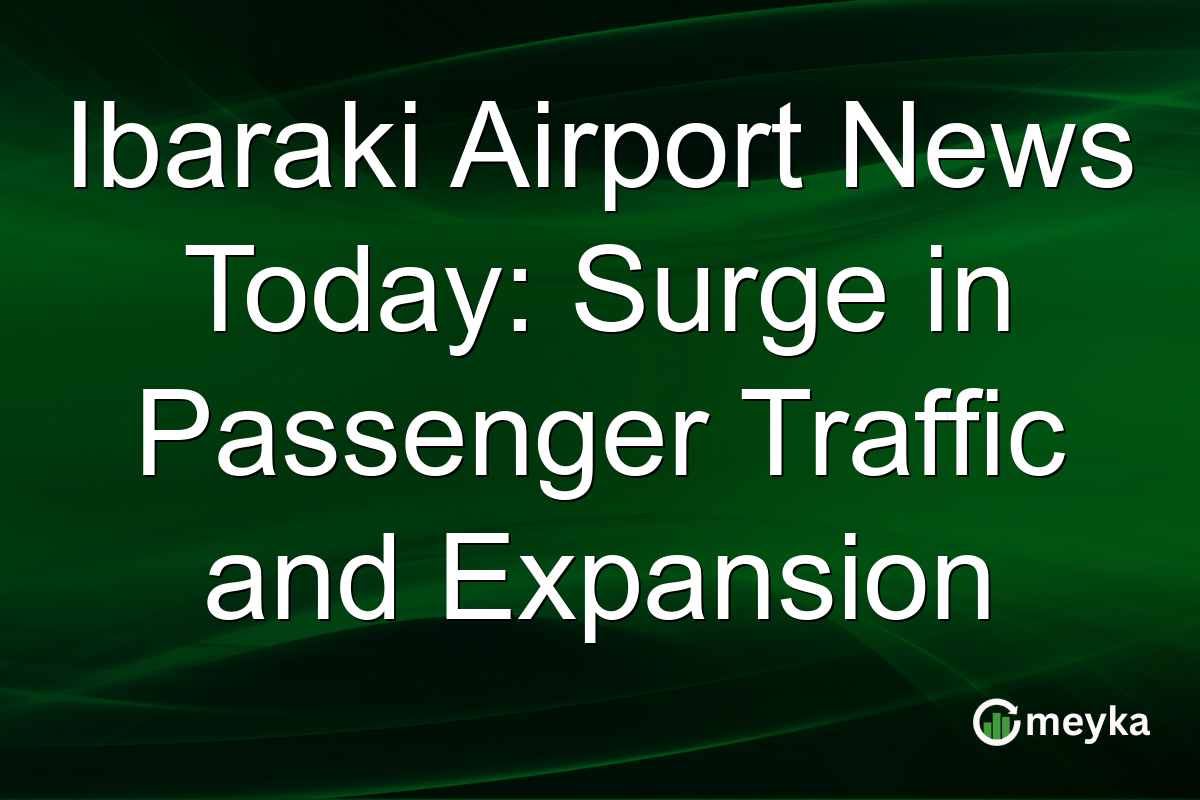Ibaraki Airport News Today: Surge in Passenger Traffic and Expansion
Ibaraki Airport, once a relatively quiet hub, is now in the spotlight due to a remarkable surge in passenger traffic. Recent data highlights a substantial increase in both domestic and international flights, cementing its importance in Japan’s regional aviation market. With the local government’s active efforts to boost business and tourism, Ibaraki Airport is not just expanding, it’s thriving. This boom signals a turning point for regional airports in a competitive aviation landscape.
Unpacking Ibaraki’s Passenger Boom
Ibaraki Airport has experienced an unprecedented 35% increase in passenger numbers compared to last year. The addition of new international routes to popular destinations like Seoul and Taipei has significantly contributed to this rise. Meanwhile, domestic flights to major cities such as Osaka and Fukuoka have also increased in frequency. Local government initiatives aimed at enhancing tourism and business travel have played a critical role. Their strategic focus on affordable and efficient travel options has attracted more passengers, making Ibaraki a key player in the Japan aviation market. This shift reflects a broader trend of growing regional airport usage in Japan.
The Business Impact on Surrounding Areas
The Ibaraki Airport passenger boom has sparked economic growth in its surrounding regions. Businesses around the airport have reported increased foot traffic and sales. Local hotels, restaurants, and retail businesses are seeing higher occupancy and sales figures, validating the Ibaraki Airport business impact. The airport’s growth has also encouraged infrastructure development. New roads and public transport links are facilitating easier access, further attracting businesses looking to capitalize on increased passenger flow. This shows a positive feedback loop where airport growth stimulates broader economic development.
Ibaraki Airport’s Expansion Plans
The airport has outlined ambitious expansion plans to accommodate rising passenger numbers. Investments are being made to enhance terminal facilities and improve efficiency. For instance, a new terminal is set to open by mid-2026, equipped with state-of-the-art amenities. The expansion aims to handle more aircraft and passengers, thus increasing capacity significantly. This will not only amplify the regional airport growth but also elevate Ibaraki’s status within the national transportation network. If these plans are successfully executed, Ibaraki will likely see continued growth, positioning itself as a major node in the Japan aviation market.
Regional Airports Gaining Ground
Ibaraki Airport’s story is part of a larger trend where regional airports are gaining prominence. This rise is due to congested hubs in major cities and travelers seeking alternatives that offer convenience and cost-effectiveness. Ibaraki’s success could inspire similar developments across Japan’s regional airports. These trends underscore the evolving dynamics within the aviation sector, where regional players are increasingly shaping market outcomes.
Final Thoughts
Ibaraki Airport’s passenger boom is a testament to the transformative power of strategic growth and smart investments. Its impressive rise not only affects the regional economy but also alters the dynamics of the Japan aviation market. As regional airports grow in significance, they offer a viable alternative to the country’s congested major hubs. For investors and businesses, the Ibaraki Airport business impact indicates ripe opportunities for growth and development. Travelers benefit from increased flight options and tourism benefits, drawing a broader audience to Ibaraki and beyond. As Ibaraki Airport continues on this upward trajectory, it represents a potential blueprint for other regional airports seeking to expand their reach. Platforms like Meyka can provide real-time insights into such developments, offering stakeholders a competitive edge in navigating these changes. Looking ahead, Ibaraki’s expansion plans and passenger traffic trends will be closely watched, serving as a barometer for regional airport growth across the globe.
FAQs
Ibaraki Airport is seeing a surge due to increased domestic and international flights, strategic government initiatives to boost tourism and business travel, and enhanced travel options that appeal to passengers.
The growth leads to more foot traffic and sales for local businesses like hotels and restaurants. Also, infrastructure development around the airport supports economic expansion in the region.
Ibaraki Airport plans to build a new terminal by mid-2026 and improve efficiency. These developments aim to increase capacity and further enhance its role in the regional aviation market.
Disclaimer:
This is for information only, not financial advice. Always do your research.






